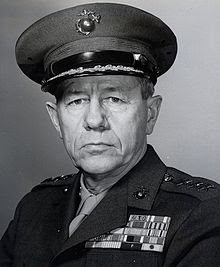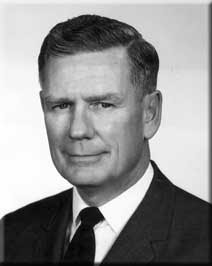
Looking Back / Army Aviation, August 2022; By Mark Albertson
For the 80th Anniversary of Army Aviation:
Reflections in North Africa
“Air Danger Zone of Friendly Artillery”
By Lieutenant Colonel F.A. Bardo, Field Artillery
When air units are working in close support with ground troops the trajectory of the ground weapons creates a problem. Once incident (from World War I) is on the records: a plane and a 155 mm projectile met en-route to their respective objectives; result, no damage to the enemy.
From the pilot’s point of view, enemy aircraft and ack-ack are his chief worries while on a mission. He is surprised to learn that field artillery is also using the same space to project missiles which vary in size from 14.6 pounds to 360 pounds and are capable of reaching a height of 43,495 feet. This trajectory therefore is a problem for air support aviation, as friendly artillery must be either by-passed or passed over at a safe altitude.
There will be times when the friendly artillery will not be firing, as well as sectors where medium and heavy artillery will not be present. It is thus essential that close cooperation be maintained between the artillery section of the supported unit and the air support party. In all cases the artillery plan of fire should be made available to the air support party.
To operate without prohibitive losses, the liaison plane as well as the artillery observation plane must remain in rear of friendly installations—beyond effective range of enemy small arms fire from ground troops. They must also operate generally over the artillery position area; otherwise, they would be in danger from high-angle trajectories of friendly artillery.
Source: Page 413, The Field Artillery Journal, Vol. 33, No. 6, The United States Field Artillery Association, Washington, D.C., June 1943.
* * * * *
Last of a ‘Grasshopper’
Captain Edward B. Baetjer, first artillery air OP pilot shot down by enemy aircraft in the Mediterranean Theater of Operations, gives this account of this incident:
“After an uneventful flight up, I was there just four days when ‘Jerry’ caught up with me. I was on way to register-in-the——Bn when a flight of FW-190s on a strafing mission intercepted me. I was at about 1,500 feet, but they came upon me so suddenly from around a mountain that they didn’t see me in time. The first five each let go a burst at me, but luckily didn’t hit me so I headed for the ground. But like a sap, instead of landing I started circling at about a hundred feet. The next thing I knew a machine gun was barking again, and my engine sort of disintegrated. Little fountains of gas started shooting up out of the gas tank, and a blur shot past in front of me. By the time I cut my switch I was just over the trees and barely moving. Finally I stalled out and crashed through the trees, going through the windshield when I hit and knocking myself cold. Colonel —–, my observer at the time, hauled me out of the plane and to an aid station. He wasn’t even scratched, thank God! At an evacuation hospital they sewed up my head, taking 29 stitches, and sent me back to North Africa.”
Source: See page 812, The Field Artillery Journal, Vol. 34, No. 12, The United States Field Artillery Association, Washington, D.C., December 1944.
* * * * *
Grasshoppers
By Colonel W.W. Ford, Field Artillery
Organic Field Artillery Air Observation has officially completed the first year of its life. On June 6, 1942, the War Department directed the establishment of this new facility. In the ensuing twelve months plans were made, personnel and equipment were assembled, and hundreds of pilots and mechanics were trained. “Grasshopper” aviation accompanied the first landing in North Africa and has since served continuously and in increasing numbers in that theater. From all accounts the service has been all that its enthusiasts predicted.
The present “grasshopper” weighs approximately 800 pounds empty, and about 1,200 pounds when loaded with crew and radio and full of fuel. It is a commercial product; many thousands like it have been used in civil aviation, and with only minor modifications it has been adopted to military use.
These little planes may be used for almost any sort of liaison work and for aerial adjustment of artillery fire. In the field artillery they serve chiefly as elevated OP’s; their other uses are secondary. Each field artillery headquarters battery—whether battalion, division artillery, group, or brigade—is equipped organically with an air observation section. Each such section has two airplanes, two pilots, one mechanic, one truck with trailer, one truck driver, and a ground crew helper. An additional mechanic is assigned to the air observation sections of division artillery, brigade, and group headquarters batteries. Observers are not assigned organically to air observation sections, but are drawn from the units to which these sections belong.
Practically all field maintenance of the airplanes is performed within the air observation section. Third echelon maintenance is a responsibility of the Army Air Forces base installations, but such maintenance is rarely necessary. A supply of spare parts is carried in the air observation sections of all headquarters batteries (except battalion) for issue to the battalions when needed. Installation of spare parts is easily within the capability or organically pilots and mechanics.
This little airplane is not a panacea for all the artilleryman’s difficulties. It cannot bomb bridges, destroy tanks, nor prepare hot meals in the field. Its usefulness lies in its ability to adjust artillery fire and to perform such observation and reconnaissance missions as can be carried out while flying within friendly areas. The plane is not only unarmed and unarmored, but also painfully slow. It is exceedingly vulnerable to small arms fire from the ground and to the fire of hostile aircraft. To live in action it must be carefully concealed while on the ground. It must take the air for short periods only, and only when hostile aircraft are not on the ground. It must fly at low altitudes in order to minimize the chance of its being seen and to facilitate a prompt landing if an enemy appears. It must not be flown over areas occupied by hostile troops.
If these restrictions appear to reduce the utility of this little plane to the vanishing point, let it be said at once that while operating under such restricted conditions this plane can adjust artillery fire on targets 10,000 yards away. Adjustments have been made on targets up to 18,000 yards away. Artillery fire increases in effectiveness and efficiency directly in proportion to the observation available. In many types of terrain the only practicable observation is air observation. This little plane can give that. By doing so it justifies its existence. Whatever else it gives is in the nature of excess profit.
Pilots and mechanics for organic field artillery air observation are trained at the Field Artillery School. Pilot training at Fort Sill is in the nature of advanced flying training, each pilot being required to have a minimum of 60 hours of flying time prior to entering the course. The flying training given at Sill is pointed toward sharpening the skill of the pilot in operating from miscellaneous small fields and from roads. Prepared landing fields are rarely used. This type of flying is inherently dangerous. It may be brought within tolerable safety limits only by careful and specialized training and by the use of discretion on part of all concerned. A high degree of flying skill is required.
Missions are invariably prearranged. This shortens the period the plane must stay in the air and thereby reduces vulnerability.
A communication check is made prior to take-off. This again shortens the period in the air. By taking every short cut possible it is possible to reduce the average time for air adjustments to about 8 minutes. Measured from take-off to landing.
Keep ‘em hopping!
Source: “Grasshoppers,” by Colonel W.W. Ford, F.SA., The Field Artillery Journal, Vol. 33, No. 9., U.S. Field Artillery Association, Washington, D.C., September 1943.
* * * * *
“Grasshopper” It Is!
Organic field artillery planes have been saddled with a variety of nicknames of widely differing aptness. Far the most fitting is “grasshopper.” Indeed, the special device of the Department of Air Training, Field Artillery School (where field artillery pilots are trained and where natural grasshoppers attain man-bearing proportions) is a grasshopper making a short landing. The term “grasshopper” is short, snappy, adaptable to improved planes of the future, and above all well suggests the type of work done by field artillery planes. So “grasshopper” it is, as far as we are concerned.
Source: The Field Artillery Journal, Vol. 33, No. 9, U.S. Field Artillery Association, Washington, D.C., September 1943.

General Robert E. Hogaboom, chair of the 1956 Hogaboom Board, which put together the Vertical Assault Concept for the Marine Corps.

Lieutenant General Gordon B. Rogers, chair of the Rogers Board, or the Army Aircraft Requirements Review Board, which fostered manufacturers to produce aircraft for the United States Army, in particular, helicopters.

General Hamilton H. Howze, member of the Rogers Board, restricted from greater focus on air mobility. Two years chair he will chair the Tactical Mobility Requirements Board.







